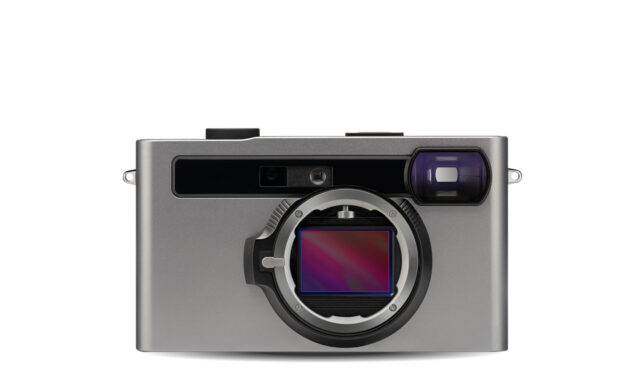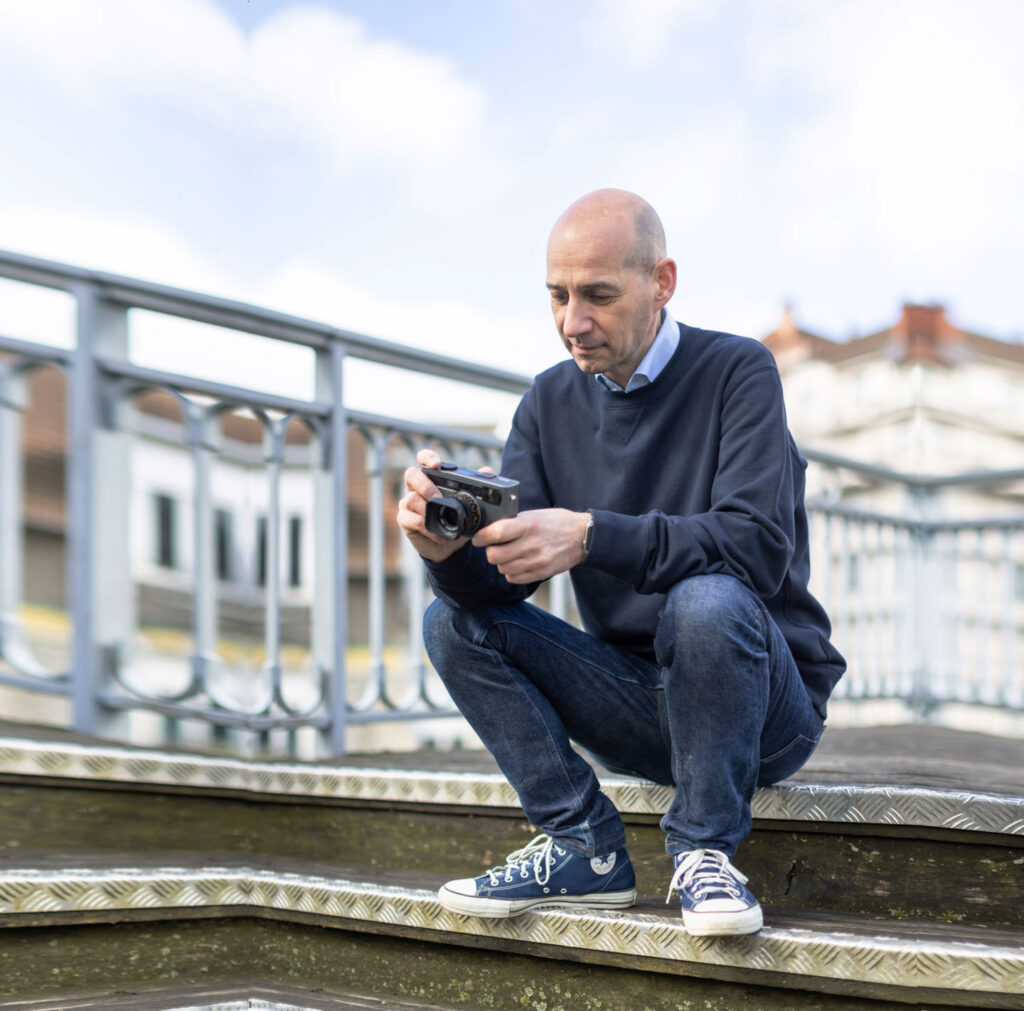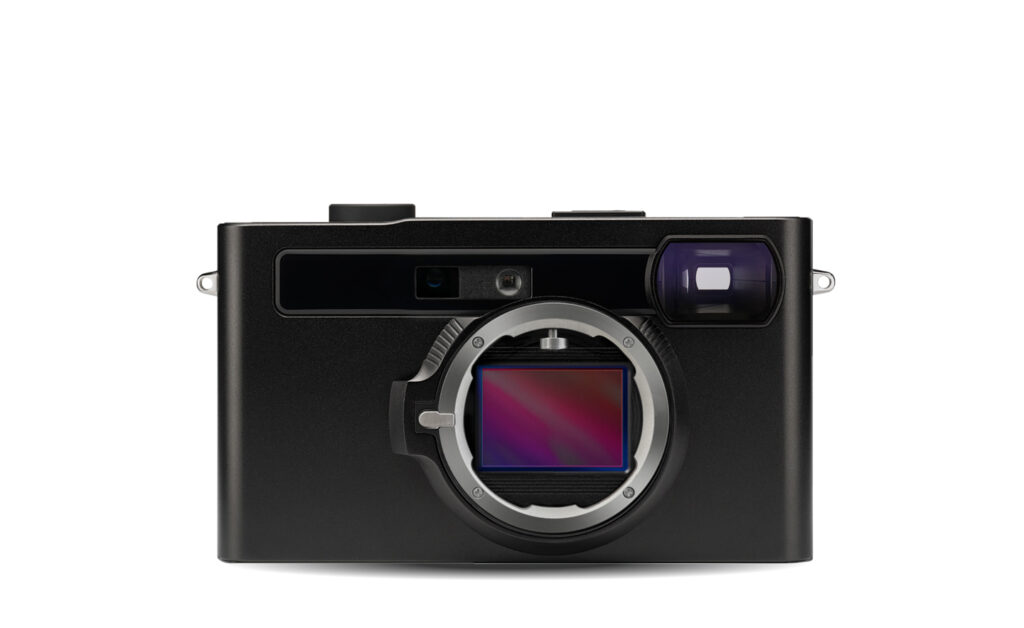The young French camera manufacturer Pixii has issued a statement. The full-frame Pixii Max digital rangefinder camera is ready to be manufactured. It will not replace, but complement, their previous model with an APS-C sensor. The small company shows that you don’t need to be a multinational brand to reach the pinnacle of camera technology. According to the announcement, the Pixii Max will continue many of the good features of earlier models and at the same time bring interesting innovations.
David Barth, the founder and driving force, of Pixii, announced something new in an email to his customers a few days ago. It was to be expected that a Pixii full-frame camera would be announced. This comes as no surprise, as I know that the Pixii pioneers already designed the previous model with a subsequent full-frame sibling in mind. A long and informative message from him confirms now what many had hoped for. The Pixii Max sounds intriguing to say the least!
The Pixii Max seeks the sweet spot with 24 MP
The new Pixii Max will have a 24.5 MP sensor, according to the manufacturer, still a sweet spot for a camera of this kind. The many ardent fans of the Leica M10 give proof of this. The comparably low (but still sufficient) resolution means that both image processing power and energy needs are readily controlled. This is important when you want to keep the camera size small. And here, the Pixii designers were remarkably successful: the full-frame variant of the camera is as small as its APS-C sibling. That’s certainly an impressive achievement.
In other respects, the coming Pixii Max is true to its principles. It has no display and relies heavily on the Pixii app. However, taking photographs will most likely also be possible in a standalone mode. The M-Mount accepts a wide variety of lenses from Leica, Zeiss, Voigtländer, and others (see our M Files Navigator for dozens of options). A wider rangefinder measuring base should give even more focusing precision than the (already excellent) predecessor. New are 28mm frame lines, a major improvement for all fans of wide-angle photography.
The former Pixii camera got lots of love for its image quality
The Pixii with the APS-C sensor is capable of astonishing results. In our big review — one of the best-read Macfilos articles ever — we came to the conclusion that the concept has an enormous potential. It remains to be seen how Pixii worked on the weaker points, especially slow sensor readout, which is all the more important as the Pixii has only an electronic shutter (in common with the Sigma fp and fpL, or the brand-new Panasonic S9).
I expect the manufacturing quality to be exceptional, as was it with the earlier models. Pixii is located in Besançon, France, the old watchmaker’s city. That’s partly because there are skilled people for jobs as demanding as producing a high-precision rangefinder camera. Furthermore, the viewfinder might well surpass everything we have seen from Leica so far. In the current model, it gives a lot of information and serves as a versatile user interface.
The Pixii Max will be much more affordable than a Leica M11
The new Pixii Max will, according to David Barth, be ready for pre-order on Friday, July 5. The launch price is €3,999. Pixii does not specify whether this is for the 32GB or 128GB model (the camera has no SD card slot). And if they are following their previous pricing policy, VAT has to be added depending on the country from which you buy. In Germany, this would mean that the new Pixii Max will cost €4,758 ‘tout taxe compris’, as the French say. For comparison: Leica’s current digital rangefinder camera, the M11, has a retail price of €8,750.


The first Pixii Max cameras will be shipped in September, according to the company. Existing customers can get an upgrade to the Pixii Max, but it is not clear if this means an exchange of the sensor only or of the whole camera. From autumn, Pixii will process new orders, maybe with a certain waiting time for the camera.
We expect high demand for the Pixii Max
It seems likely that the Pixii Max will take the success story of this fledgling brand to a new level. In the US, they got B&H, one of the biggest photographic gear dealers, to put them into their offerings. A thoroughly modern, affordable full-frame rangefinder camera might well turn out to be precisely what many customers have been waiting for.
What do you think? Will the new Pixii Max full-frame digital rangefinder camera be a game changer? Or is the niche just big enough for one player, Leica? Have you ever used a Pixii camera, if so, what are your thoughts and experiences? What would need to happen to convince you to buy a Pixii Max camera? Or is your name on the list already? Let’s discuss in the comments section!
Want to contribute an article to Macfilos? It’s easy. Just click the “Write for Us” button. We’ll help with the writing and guide you through the process.








This would be our problem in Australia: terrible exchange rate, no service centre, and after testing a myriad of cameras – for me – there are so many things missing with the Pixii.
I could almost write an essay comparing cameras and I have even thought about developing one myself – as I enjoy both stills and cine:
After all these years – the only camera that comes close is the Sigma FP L and the ONLY things that it needs now is:
1: IBIS or stabilised prime lenses (like Canon RF)
2: Global shutter or a faster readout
3: USB connected iOS for remote control.
Really that is not too much to ask when you think about it and I think if Sigma pursued this they could have the perfect Camera.
I suspect that since most of the issues that might arise would be firmware related: these could be addressed over the air with Besançon directly.
I’m hoping the Pixii Max resembles the M11D and is as minimal as can be.
So I’ve had links to order this now but I’m sitting on fence. I have not come across many reviews of this camera or even people’s experience of the other models from this company other than a odd review here or there.
There is a lot that is fully electronic (no SD cards e.g.) and possible risks associated. There is no service center in the UK which would mean spending money to send it to France.
The price of the black model and + VAT would almost make it to £4500 or so. Wouldn’t it be better to just buy an M11 / M11-p? There are bricking ssues with that but at least I could walk to the Leica shop and ask them to fix it.
Thanks to all for the comments. The announcement of a new rangefinder camera is exciting news, an all the more when it is technologically advanced and fitted with a full-frame sensor. I hope we have the opportunity to review one once it is available. Please understand that we can’t answer most of the obvious questions before we were able to actually use the new Pixii Max. That’s also a question of fairness. What I want to highlight however is that the experience the the former APS-C model was generally very positive. So stay tuned! Jörg-Peter
Thanks for this update Joerg-Peter.
I’ve had this camera on my radar for a while and wondered whether it would be made available with full frame. I like the idea of being connected to a startup and being part of its growth.
My only two points of hesitation are 1, that Pixii doesn’t disappear in the way the Leica CL legacy did. It’s an impossible question to answer, but a concern nevertheless.
My other hesitation and bugbear is the frustration of seeing the lens obstructing a good part of the bottom right hand quadrant of M’s viewfinder. It’s seems to defeat the object of an optical viewfinder. Does the Pixii suffer from this problem?
Best
Jon
Handbuilt in France sounds great because it means maintenance and therefore suistanability are factored in
I look forward to try the product
According to PetaPixel 32GB of internal storage or 128GB for €3,999 and €4,249 respectively. No US price yet. According to Leica Rumors the intro price of €3,999 will increase later to €4,159. Personally I think a FF Pixii is fantastic news.
This is academic for us as there is no agent is Australia and the Euro conversion makes it prohibitive.
If I really only want 24 Mp then I already have the Leica Q.
I often wonder why people are wrapped up in manual focus and rangefinders.
And wifi connection to iPhone – that is the most frustrating feature on any camera so until I see something rock solid – that’s a negative.
I also have the Sigma Fp L. So if I want small manual focus with m lenses then that’s my answer.
There are plenty of MP in most cameras, especially if you consider use of the expansion of pixels associated with the print or export or save commands of Lr or Photoshop, or even such programs as Gigapixel AI. I think the next step is not more MP but more computational imaging, like smart phone cameras can do. That means better night and low light shooting, camera shake reduction, automatic background blurring, etc.
Those things are indeed nifty, and are offered in several cameras already. The more digital photography goes in that direction, the less i am inclined to upgrade. I am happy with a camera that is mostly a digital version of a classic film camera.
As far as resolution goes, although 24 MP might be considered “low” when compared to what is available in the marketplace, in practical terms I don’t consider that low. I just returned from vacation at my favorite place in the world (Ocracoke Island, NC, USA). Going over the some 700 photos I took, mostly with Nikon Df, but some with the waterproof Nikon 1 AW1 (in the surf!), I am amazed at how good these photographs are. The cameras are 16 MP and 14 MP respectively.
The Df seems particularly well-matched resolution-wise to the four lenses I used on the trip, all of which are AiS Nikkors from the late 1970s – early 1980s.
Nevertheless, I do agree that 24 MP seems to be considered the “sweet spot”. Witness the Nikon Zf. Nikon could have put their 45 MP sensor in it, but instead they chose a 24.
Incidentally I also shot some film for the first time in 10 years. One roll of TMax 400, yet to be developed.
I fail to understand this trend of high MP. Anyone who thinks low MPs are not good, they should try Sony zve1. A 12.2 MP tiny FF camera with ibis etc, unfortunately without a VF but with a vast range of lenses small and big compared to any other mirror less FF mount.
It is great that we have another manufacturer producing RF cameras and would be interesting to see if Leica responds at all by introducing a lower MP lower priced RF model.